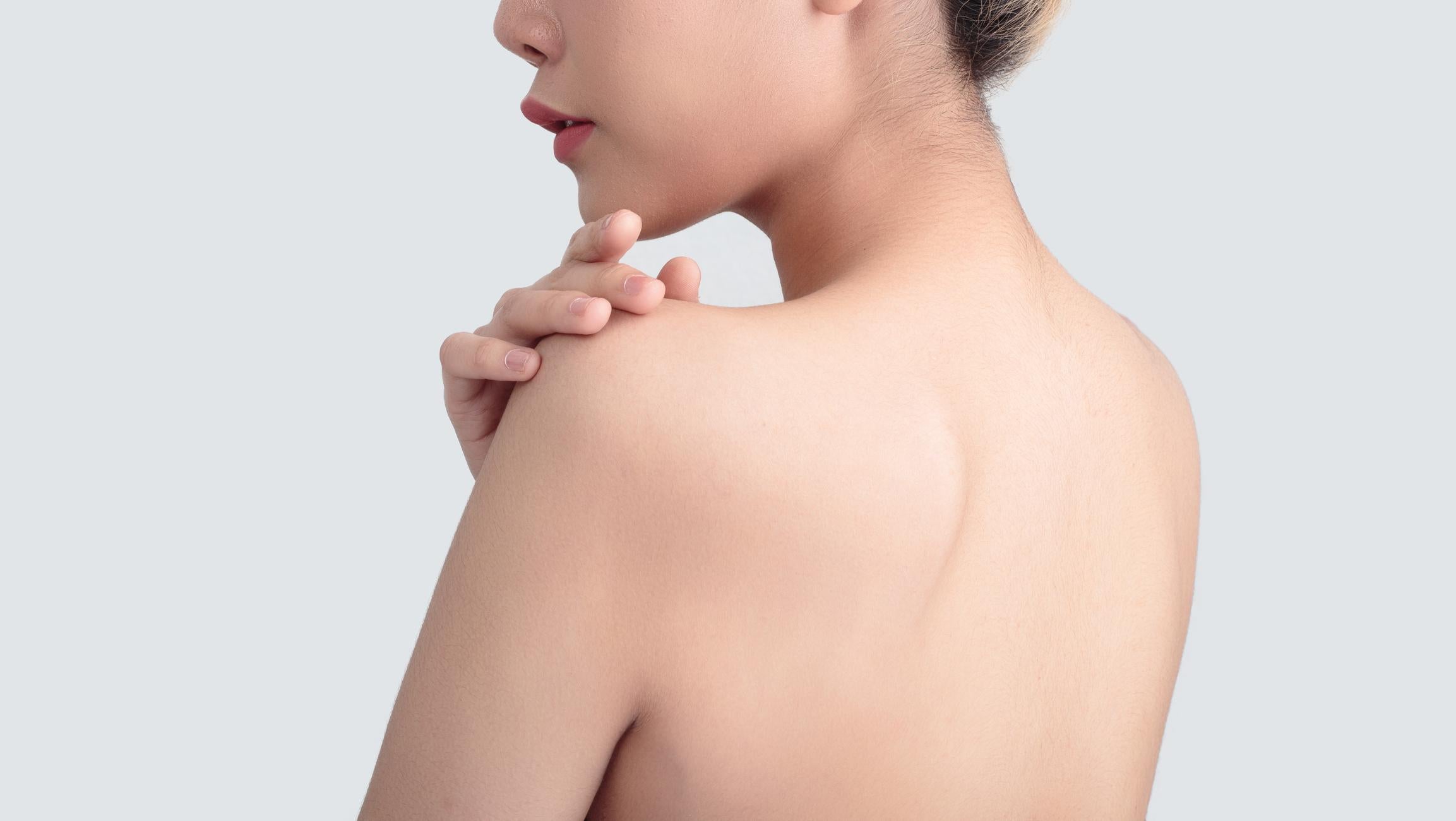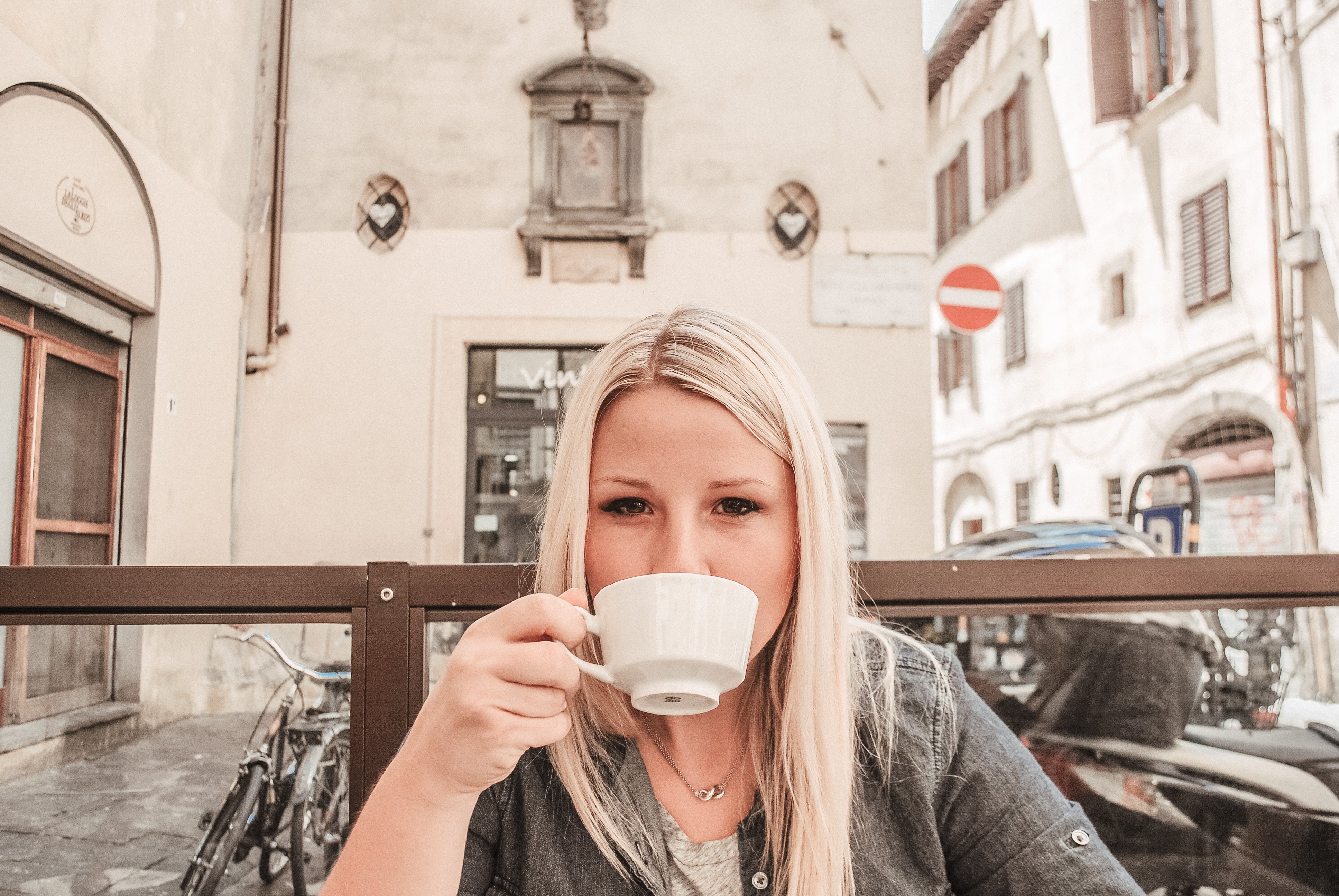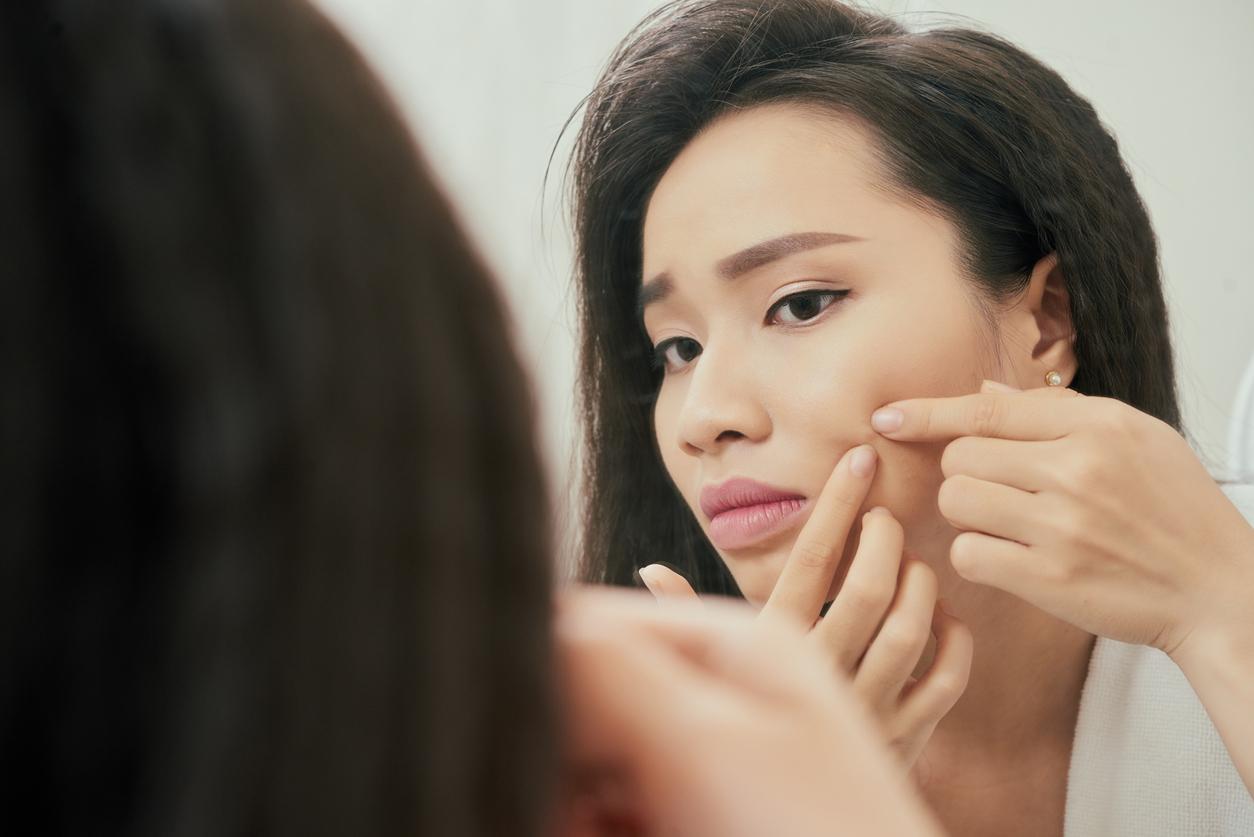
14 Ways to Treat Back Acne AKA “Bacne”
Are bacne breakouts stopping you from making the most of the warm summer weather? Back acne, otherwise known as “bacne”, can show up on the back and shoulders as pimples, whiteheads, and blackheads. But while bacne is certainly annoying, it’s also very treatable. Keep reading to learn what causes bacne and how to clear it up!
What Causes Bacne?
To prevent and treat bacne, we first need to understand what causes it. Like facial acne, bacne is caused by a combination of excess sebum, buildup of dead skin cells, and bacteria. The back has more oil glands than other parts of the body, which is why it’s particularly prone to breakouts. The skin on your back is also very thick, which means it’s more likely to have clogged pores.Some additional factors can contribute to bacne :
- Genetics - Acne-prone skin may run in your family.
- Hormones - Hormonal imbalances, especially those related to the menstrual cycle, can cause oil glands to overproduce sebum, leading to more breakouts.
- Medications - Some medications like antidepressants can worsen bacne.
- Stress - Heightened stress levels can affect hormonal levels which can in turn lead to more breakouts.
- Wearing tight clothes - Wearing fitted clothing leads to a condition called acne mechanica, in which sweat and oil mix with friction to cause acne breakouts on the back.
- Sweating - Acne-causing bacteria thrive in moist environments like underneath sweaty workout clothes.
- Hairstyle - If you have long hair, oils, and products from your hair can transfer to your back and lead to breakouts.
What doesn’t cause bacne? Exercise. While some of your gym habits might contribute to breakouts on your back (more on that later), exercise itself does not cause breakouts. So even if you have bacne, that’s no excuse to skip the gym!

How to Get Rid of Bacne
1. Wash Your Back
We hope this goes without saying, but showering and washing your back on the reg can help to reduce bacne breakouts. Wash your back with soap and water every day and use a back loofah to reach any parts of your back that you can’t reach on your own.
2. Wash Your Back Last
Repeat after us: Always wash your back after you wash your hair. When you rinse your hair, ingredients from your shampoo and conditioner can run down your back, clogging pores and creating bacne breakouts. Wash and rinse your hair thoroughly, then wash your back to remove any extra residue.
3. Use an Exfoliating Scrub
Washing your back can help eliminate acne-causing bacteria, but that’s only one piece of the bacne puzzle. Regular exfoliation is also an important part of treating bacne because it scrubs away pore-clogging dead skin cells.
We recommend using Rejuvenating Essence Body Polish two or three days per week to clear up the bacne. Crafted with a Nordic blend of berries including lingonberry, cranberry, bilberry, and birch, this body scrub works by buffing away dead skin while encouraging healing. Just rub the Body Polish in circular motions onto wet skin.
Can’t reach your entire back? Use a long-handled exfoliating brush to make sure that the whole area gets the TLC it needs.
4. Replace Your Shower Accessories
How often do you replace your loofah? Reusable shower accessories like washcloths and loofahs are hotbeds for moisture-loving bacteria.
That’s why dermatologists recommend that you replace your loofah every three weeks (or sooner if it starts to smell funky). Our tip: buy in bulk so you always have a fresh loofah on hand.
If you use washcloths, try to use a clean one each time you take a shower. And never share your washcloth with other people.
5. Wash Your Towels
If you dry off with a dirty towel after showering, you’re just transferring bacteria to your clean back. Damp towels breed bacteria, so make sure you hang your towels to dry after using them and wash them at a minimum once per week.
6. Moisturize
Acne-prone skin needs moisture too! Keeping your skin adequately hydrated can help regulate sebum production. After showering, make sure to hydrate your back with a lightweight body lotion.

7. Update Your Workout Wardrobe
Do you work out in old cotton T-shirts? Sure, cotton is breathable, but it also holds sweat against your skin, creating an ideal environment for acne-causing bacteria to thrive. If you’re prone to bacne, sweat-wicking fabrics are an absolute must for your gym routine.
8. Shower Immediately After Working Out
There’s a reason why your gym has showers! You might think you’re good to drive home and wash off later, but that extra 20 minutes is long enough to let acne-causing bacteria start working their magic (especially if you’re wearing tight workout clothes).
To get rid of bacne, strip off sweaty gym gear and shower as soon as you finish your workout. If you don’t have time to shower at the gym, changing out of your sweaty clothes and wiping your back with an antibacterial wipe can also help clear up bacne.
9. Wash Your Bras
When was the last time you washed your bra? Unwashed bras accumulate bacteria, which can contribute to acne mechanica. If you wear bras, wash them after every single wear (especially sports bras).

10. Don’t Touch!
We can’t stress this enough: don’t pick or squeeze pimples and blackheads on your back or shoulders! Picking increases inflammation, which leads to a type of scarring called post-inflammatory hyperpigmentation. While it may be tempting to attempt to unclog pores on your own, your skin will look better in the long run if you resist the urge to pick and keep your hands off of it.
11. Change Your Diet
The foods you eat can also have a big influence on the way your skin looks. Eating more anti-inflammatory foods helps reduce all types of acne, including bacne. Make sure to incorporate plenty of foods that fight inflammation into your diet like fish, berries, and leafy green veggies.
12. Skip the Whey
Whey is a popular way for exercise enthusiasts to get more muscle-building protein in their diet.
Unfortunately, whey has also been linked to bacne. For some people, bacne clears up on its own when they stop consuming whey protein powder and bars. If you must supplement, consider vegan sources of protein like pea powder, which aren’t likely to contribute to bacne.
13. Use Facial Treatments
Essentially, bacne is the same as facial acne, so it makes sense that facial acne products would work just as well on your back.
Our pick for clearing up bacne? The Averr Aglow Clear Skin Kit. The Averr Aglow Clear Skin Kit is formulated with over 40 natural plants and minerals to clear up acne and nourish the skin. Averr Aglow works by eliminating acne-causing bacteria, detoxifying clogged pores, and stimulating healing to reduce scarring.
14. See a Doctor
If you’ve tried everything and your bacne still won’t go away, it might be time to visit a dermatologist. Your dermatologist can prescribe more aggressive treatments like creams or antibiotics. They also might recommend birth control pills, which can help regulate your oil-causing hormones.
Bacne is treatable with some simple lifestyle changes. We hope these tips have you confidently showing some skin in no time!
What to Do Next? Try Averr Aglow’s Clear Skin Kit
Tired of feeling lost and confused about what you should do to get clear, smooth skin? Order the Clear Skin Kit.
The Clear Skin Kit contains products specially crafted with the perfect blend of natural ingredients that help soothe and calm red, irritated skin while also clearing up breakouts. If you struggle with sensitive acne/breakout-prone skin, hormonal acne, cystic acne, or rosacea, then you’ll be happy you found this complete routine.
Please understand, that results may vary, we’re not selling you a miracle product and would never try to position or state that you will get a true result in only a few days. In our clinical trials, most users found the most results at the 30-day and then the 56-day mark by sticking with our routine.
What is Averr Aglow®?
Averr means Truth. We have pioneered a revolutionary no-rinse cleansing routine specifically tailored to address problematic skin issues.
Hi, I’m Camille, founder of Averr Aglow, and I help adult women who are battling breakouts and acne get clear skin results like they have never seen before, even if nothing has worked for them in the past.
After battling breakouts for over 16 years, trying every skincare product under the sun, and visiting countless professionals like dermatologists, nutritionists, and hormonal doctors, I finally learned why nothing seemed to work on clearing up my skin, what truly causes breakouts and acne, and EXACTLY what to do to get clear skin results – and I want to help you do the same.
Let me help you! Read my full testimonial here






